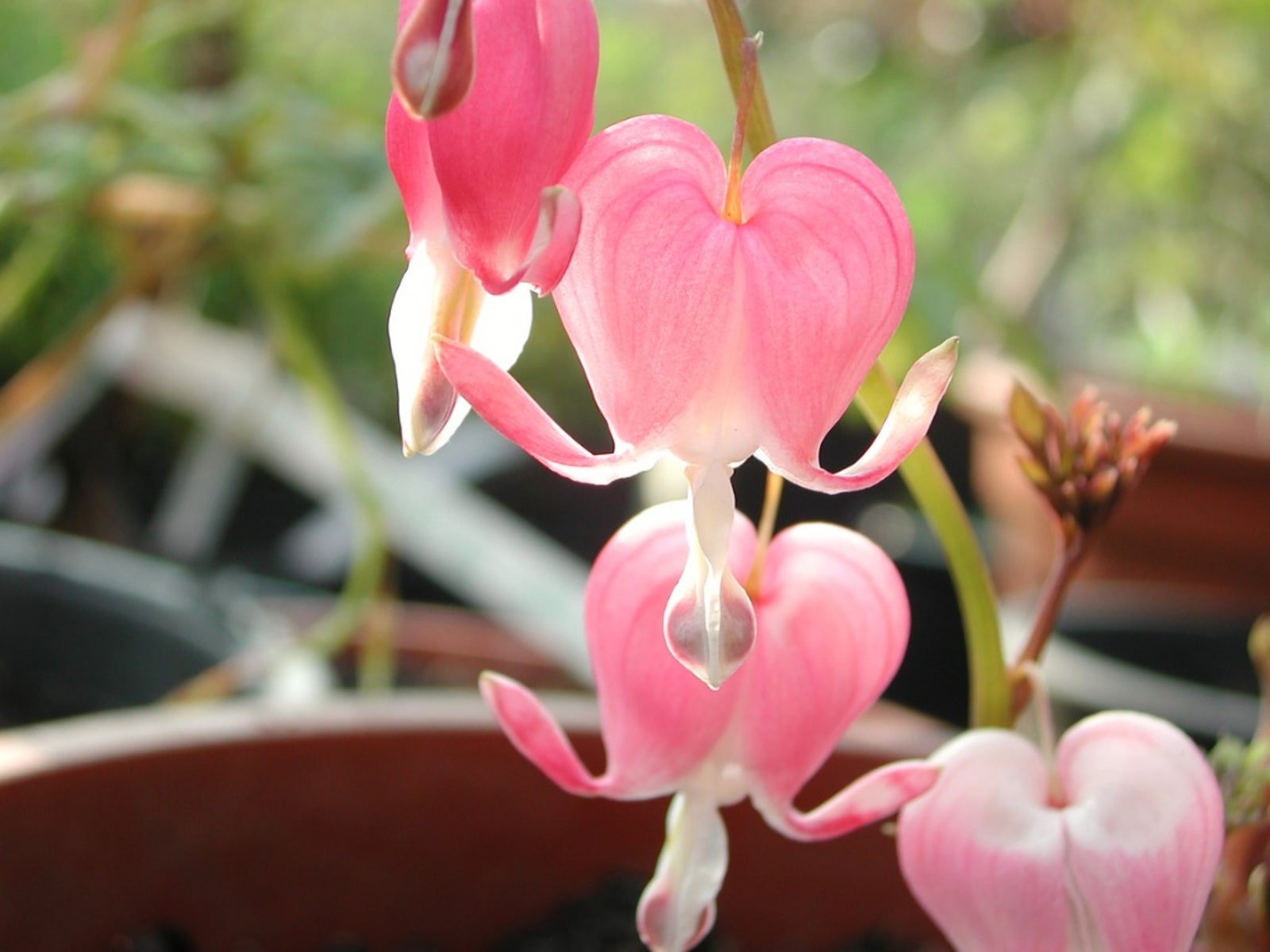Bleeding Heart Container Growing: A Guide To Bleeding Heart Container Care


Bleeding heart (Dicentra spp.) is an old-fashioned plant with heart-shaped blooms that dangle gracefully from leafless, drooping stems. Bleeding heart, which grows in USDA plant hardiness zones 3 through 9, is a wonderful choice for a semi-shady spot in your garden. Although bleeding heart is a woodland plant, growing bleeding heart in a container is definitely possible. In fact, container-grown bleeding heart will thrive as long as you provide the proper growing conditions.
How to Grow Bleeding Heart in a Pot
A large container is best for bleeding heart container growing, as bleeding heart is a relatively large plant at maturity. If you’re short on space, consider a smaller species such as Dicentra formosa, which tops out at 6 to 20 inches (15-51 cm.). Fill the container with a rich, well-drained, lightweight potting mix that mimics the plant’s natural environment. A compost or peat-based commercial mix works well but add perlite or sand to ensure the mix drains well. Mix a balanced, time-released granular fertilizer into the potting mix at planting time. Read the label carefully to determine the optimum amount for the plant and container size.
Bleeding Heart Container Care
Growing bleeding heart in a container does require some upkeep in order to keep the plant looking its best in a potted environment. Place the container where the bleeding heart plant is exposed to light shade or dappled or partial sunlight. Water bleeding heart regularly but allow the surface of the potting mix to dry slightly between waterings. Bleeding heart requires moist, well-drained soil and may rot if conditions are too soggy. Remember that container-grown bleeding heart dries out faster than one planted in the ground. Fertilize bleeding heart monthly using a diluted water-soluble fertilizer or apply a controlled release fertilizer according to the schedule indicated on the container. Read the label carefully and avoid overfeeding. As a general rule, too little fertilizer is better than too much. Don’t bother deadheading container-grown bleeding heart plants. Since the plant blooms only once, no deadheading is needed. Trim the plant lightly when the plant enters dormancy – when the leaves turn yellow and flowering ends – usually in late spring or early summer.
Sign up for the Gardening Know How newsletter today and receive a free copy of our e-book "How to Grow Delicious Tomatoes".

A Credentialed Garden Writer, Mary H. Dyer was with Gardening Know How in the very beginning, publishing articles as early as 2007.